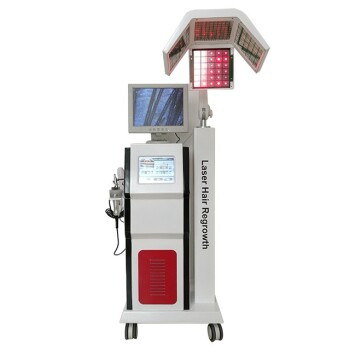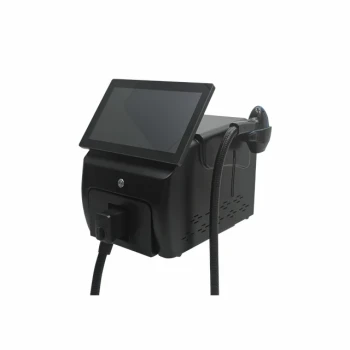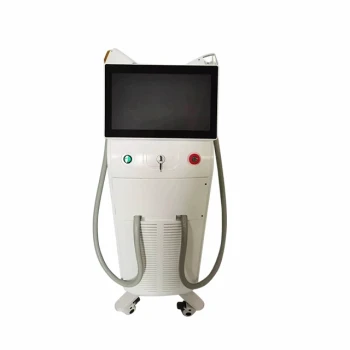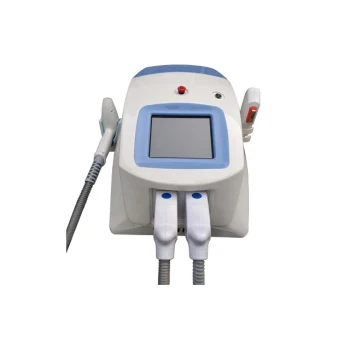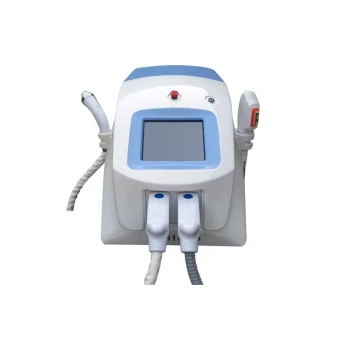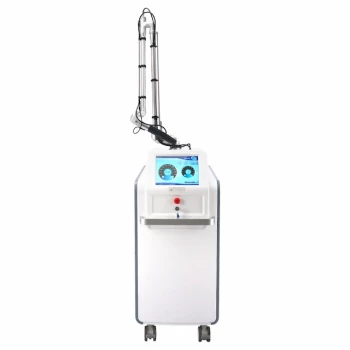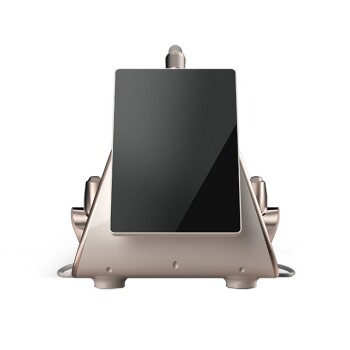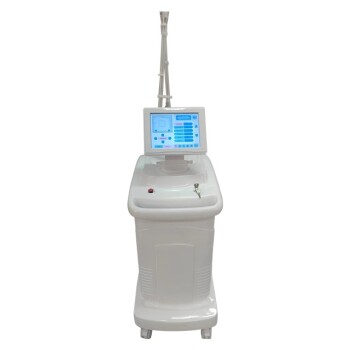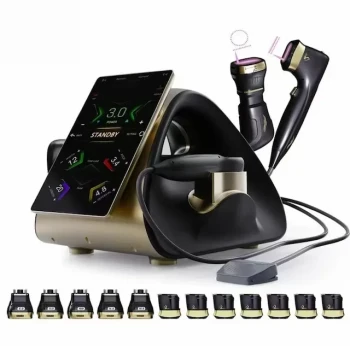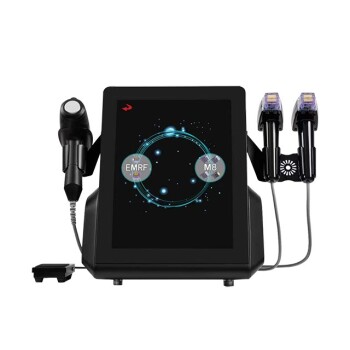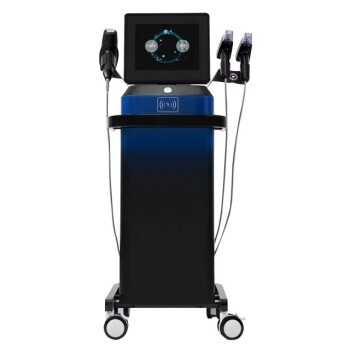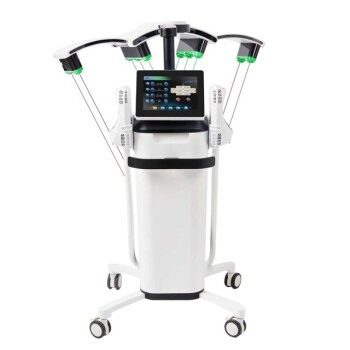In clinical trials, Low-Level Laser Therapy (LLLT) has been shown to be an effective treatment for certain types of hair loss. A significant double-blind, randomized controlled trial demonstrated a 35% increase in hair growth among male patients with androgenetic alopecia (AGA) after 16 weeks of consistent use.
LLLT is a clinically validated method for increasing hair density in individuals with androgenetic alopecia. However, its effectiveness is critically dependent on consistent, long-term application and is designed to stimulate existing follicles, not regrow hair on completely bald areas.
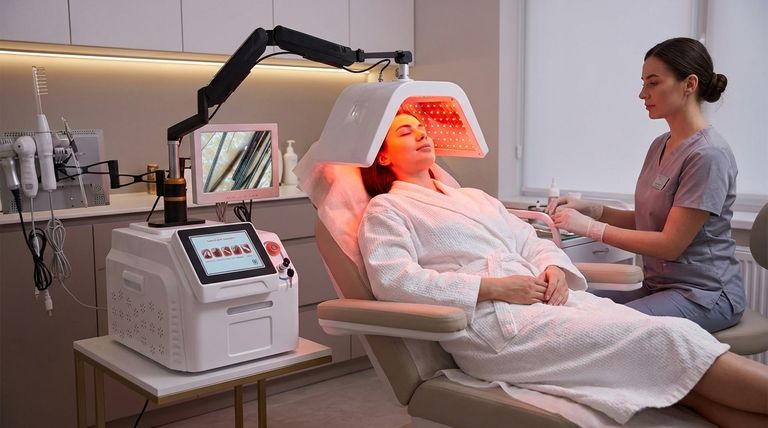
How LLLT Stimulates Hair Follicles
To understand the effectiveness of LLLT, it's essential to grasp the underlying biological mechanism. The technology doesn't magically create new hair; it energizes the existing cellular machinery in your scalp.
The Principle of Photobiomodulation
At its core, LLLT operates on a principle called photobiomodulation. Specific wavelengths of red light penetrate the scalp tissue and are absorbed by cells within the hair follicles.
Enhancing Cellular Energy
This light energy is thought to stimulate mitochondria, the powerhouses of cells. This boost in cellular metabolism helps move dormant or weakened hair follicles from the resting (telogen) phase back into the active growth (anagen) phase.
Improving Blood Flow and Nutrition
The process also promotes increased blood circulation in the treated area. Enhanced blood flow delivers more oxygen and vital nutrients to the hair follicles, creating a healthier environment for hair growth.
Examining the Clinical Evidence
While the mechanism is compelling, the true measure of effectiveness comes from objective, controlled studies.
A Key Randomized Controlled Trial
A notable study by Lanzafame et al. provides a clear benchmark. It was a double-blind randomized controlled trial, the gold standard for clinical research, focusing on male patients with androgenetic alopecia (AGA), or male pattern baldness.
The Specific Treatment Protocol
Participants used a helmet device for 25 minutes every other day for 16 weeks. This rigorous and consistent schedule is crucial for achieving results. Sporadic use is unlikely to yield the same outcome.
The Measurable Outcome
The study reported a 35% increase in hair growth for the group using the LLLT device compared to the placebo group. This number represents a statistically significant increase in hair count and density in the treated areas.
Understanding the Trade-offs and Limitations
Like any treatment, LLLT is not a universal solution. Understanding its limitations is key to setting realistic expectations and determining if it's the right choice for you.
It's Not a Cure for Baldness
LLLT is effective at revitalizing miniaturized or dormant follicles. It cannot revive follicles that are already dead and gone. Therefore, it is most effective for those in the early to moderate stages of hair loss, not on areas that have been completely bald for years.
Consistency is Non-Negotiable
The clinical results are tied directly to the strict protocol used in the study. To see a meaningful change, you must be prepared to commit to a consistent treatment schedule over several months. Failing to adhere to the schedule will significantly diminish the results.
Results Vary By Individual
While the study showed an average increase of 35%, this is not a guaranteed number for every user. Individual results will vary based on genetics, the stage and progression of hair loss, and overall health.
Making the Right Choice for Your Goal
LLLT is a powerful tool when applied correctly and for the right candidate. Use these points to guide your decision.
- If your primary focus is slowing early-stage pattern hair loss: LLLT has strong clinical evidence supporting its use to increase hair density and potentially slow the progression of androgenetic alopecia.
- If your primary focus is a non-invasive, drug-free option: LLLT stands out as a safe, side-effect-free treatment that works by stimulating the body's own cellular processes.
- If your primary focus is reversing long-term, extensive baldness: LLLT is likely not the right solution, as its mechanism relies on stimulating existing, albeit weakened, hair follicles.
Ultimately, understanding both the potential and the required commitment of LLLT empowers you to make an informed decision for managing your hair health.
Summary Table:
| Aspect | Key Finding |
|---|---|
| Clinical Evidence | Double-blind trial shows 35% increase in hair growth (AGA) |
| Best For | Early to moderate stages of androgenetic alopecia |
| Key Requirement | Consistent use (e.g., 25 min every other day for 16+ weeks) |
| Mechanism | Photobiomodulation energizes follicles to re-enter growth phase |
| Limitation | Cannot regrow hair on completely bald areas |
Ready to integrate clinically-proven LLLT technology into your practice?
BELIS specializes in professional medical aesthetic equipment, serving medical aesthetics clinics and premium beauty salons. Our advanced LLLT devices are designed to deliver reliable, safe, and effective results for your clients, helping you offer a leading, non-invasive hair restoration solution.
Contact our experts today to learn how our professional LLLT equipment can enhance your service offerings and drive client satisfaction.
Visual Guide
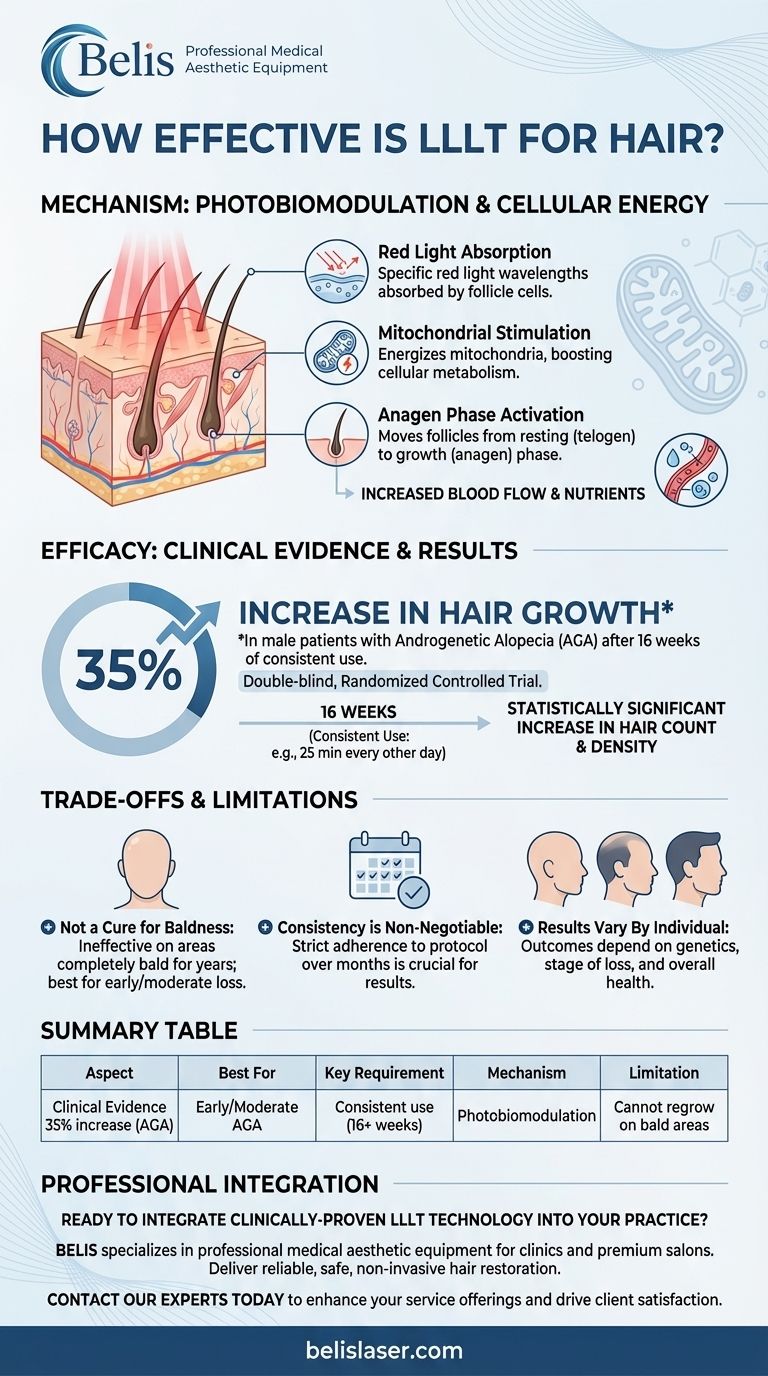
Related Products
- Multifunctional Laser Hair Growth Machine Device for Hair Growth
- Multifunctional Laser Hair Growth Machine Device for Hair Growth
- Diode Laser SHR Trilaser Hair Removal Machine for Clinic Use
- Clinic Diode Laser Hair Removal Machine with SHR and Trilaser Technology
- Trilaser Diode Hair Removal Machine for Beauty Clinic Use
People Also Ask
- How often should I use high frequency for hair growth? Optimize Your Scalp Health Routine
- Is it safe to use a hair removal machine? A Guide to Safe and Effective At-Home Hair Removal
- Are laser hair growth devices safe? A Guide to Safe & Effective At-Home Treatment
- What is the success rate of LLLT hair treatment? Over 80% Success in Slowing Hair Loss
- What does the SHR do? The Gentle, Pain-Free Revolution in Laser Hair Removal

